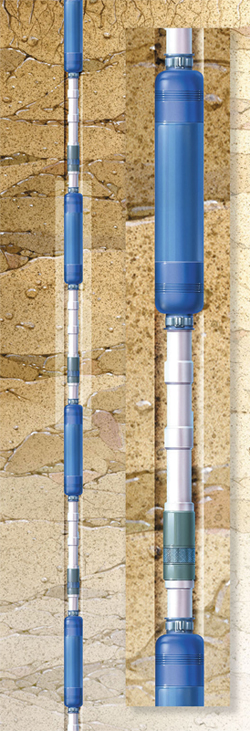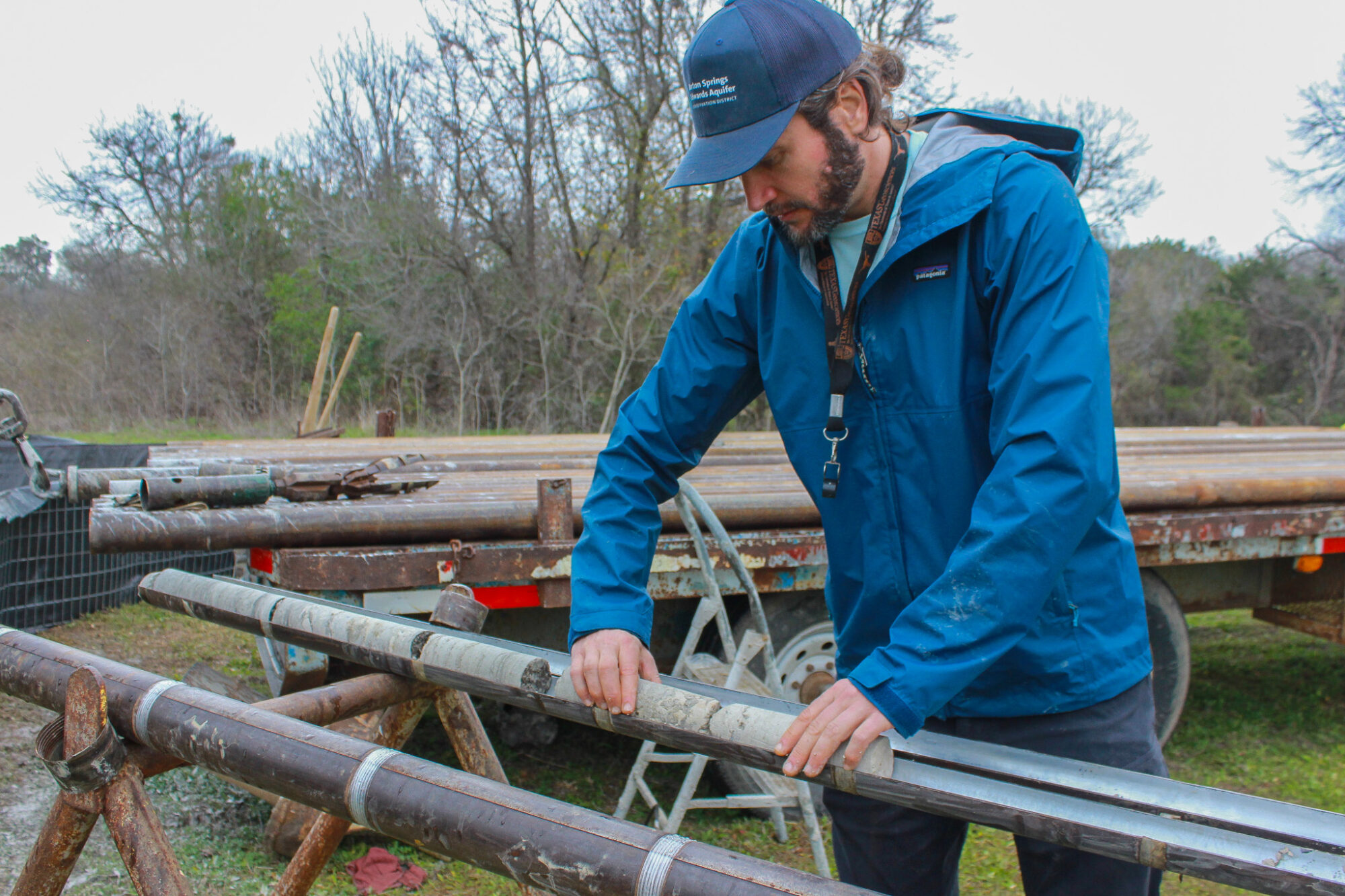Jeff Watson, Staff Hydrogeologist, collecting freshly cut core samples during the Barton Springs Multiport Well drilling process in February 2024.
The District has successfully drilled two new monitor wells this year- one in Garrison Park and another in Zilker Park just south of Barton Springs Pool. While construction at the Garrison monitor well is now complete, there is a second phase for the Zilker well, now known as the Barton Springs Multiport Well.
As the name implies, the Barton Springs site will be a multiport well. Multiport wells enable data collection at different isolated zones within a single well borehole, allowing comprehensive vertical profiling of the aquifer. (A borehole is a deep narrow hole in the ground usually used for locating water or oil.) Water levels and water quality samples can be collected from each zone within the multiport well. This contrasts with more traditional monitoring wells, which generally allow for measurements of only one interval within an aquifer. The Barton Springs Multiport Well will have 14 different zones spanning the full thickness of the Edwards Aquifer and the upper portion of the Trinity Aquifer. The multiport equipment, designed by Westbay Instruments, will be installed at the Barton Springs site this year.

Drawing of Westbay Instruments multiport equipment that will be installed at the Barton Springs well site.
The District currently has seven multiport wells throughout its territory. These wells allow data collection from various geological units, including those overlying and within the Edwards Aquifer and formations belonging to the Upper, Middle, and Lower Trinity aquifers.
The Barton Springs Multiport Well utilized coring as the drilling method instead of conventional drilling techniques. Coring involves retrieving intact cylindrical rock samples with a specialized drill bit. This is an alternative to conventional drilling, which pulverizes the rock into small pieces, destroying much of the structure preserved in the rock. By using the coring approach, the District has acquired a 560-foot continuous core throughout the entire thickness of the Edwards Aquifer and top portion of the Trinity Aquifer near Barton Springs. This is the first core sample of this length to be collected this close to the springs. This aquifer host rock core specimen will allow for in-depth geological research and analysis.

Jeff Watson and Jacob Newton, Regulatory Compliance Specialist, boxing up core samples at the Barton Springs drilling site in February 2024. The rock core is broken up into smaller pieces both naturally and manually, which allows it to be transported and stored more easily.
These core samples will be donated to the Bureau of Economic Geology, which is part of the University of Texas. The District’s Aquifer Science team will collaborate with local geologists to evaluate core samples and borehole data, which will help inform at which depths to set zones within the multiport well. These analyses will also improve our understanding of the hydrogeology near Barton Springs. Such data is essential to better understand the geologic history and makeup of the Barton Springs segment of the Edwards Aquifer, which the District oversees.

